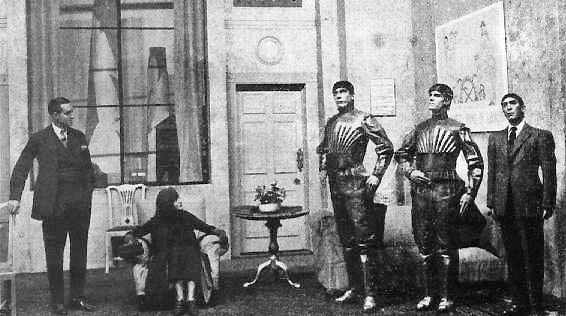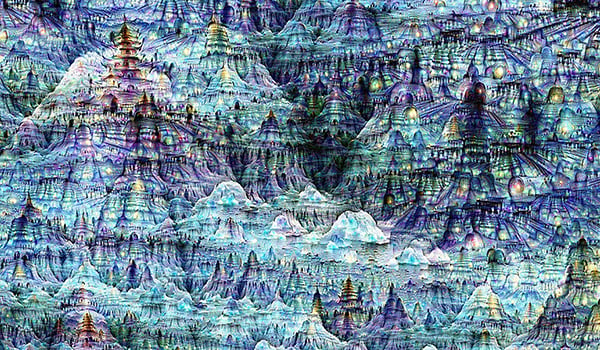Since the introduction of the printing press, machines have become an inseparable part of our society. They helped to modernize our society and also became an important topic artists would discuss. The development of machines inspired artists and arts in turn led to more development of machinery.
This week, Professor Vesna talked about many ways arts and robotics influenced each other. Robots were first visualized in Czech writer Kare Capek’s science fiction play Rossum’s Universal Robots(R.U.R.) and may have inspired scientists how robots should behave. The invention of the streamline production by Ford, while enriching workers, also made these workers only a fixed part of a large machine. Charlie Chaplin then discussed in Modern Times how industrialization dehumanized workers.
 |
| A scene from the R.UR. play |
| The poster for Modern Times |
While robotics and machines help bring new ideas to artists, they also in some way undermine creativity and the uniqueness of arts. Walter Benjamin, a German Jewish philosopher and essayist, discussed the negative effects of mass production and machines on art in his essay “The Work of Art in the Age of Mechanical Reproduction’. He made the point that mechanical reproduction and mass production can hurt originality and creativity. I think the result would be that while arts are being mass produced, their values are becoming more and more undermined and artists make art to make money rather than express their ideas.
However, I believe that robotics and machines could lead to new inspirations for artists. For instance, Google made A.I. that can produce paintings according to certain keywords such as dreams or sunlight. These innovations could provide artists with new insights about how arts might be created.
 |
| A Google A.I. painting |
Sources:
Benjamin, Walter. The Work of Art in the Age of Mechanical Reproduction. London: Penguin, 2008. Print.
Mateer, Dirk. Production, Innovation, and Efficiency in "Modern Times". N.p., n.d. 2012.<http://www.criticalcommons.org/Members/gdmateer/commentaries/production-innovation-and-efficiency-in-modern-times>
Metz, Cade. Google’s Artificial Brain Is Pumping Out Trippy—And Pricey—Art. N.p., n.d. 2016. <https://www.wired.com/2016/02/googles-artificial-intelligence-gets-first-art-show/>
Vesna, Victoria. “Robotics.” Lecture. CoLE DESMA 9. Web. <https://cole.uconline.edu/~UCLA-201209-12F-DESMA-9-1#l=Week-3-Assignment/id4287887>.
Vishnevetsky, Ignatiy. A century later, why does Chaplin still matter?. N.p., n.d. 2014. <http://www.avclub.com/article/century-later-why-does-chaplin-still-matter-205775>
No comments:
Post a Comment